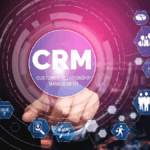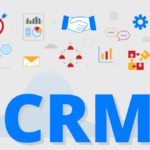Adopting a new Customer Relationship Management (CRM) system is a big step for any organization—but the real challenge lies in getting your team to use it effectively. Even the most powerful CRM tool will fail if your staff isn’t properly trained and engaged.
Training your team on new CRM tools ensures high user adoption, fewer errors, and better ROI. Here’s a step-by-step guide on how to do it right:
Start with a Clear Rollout Plan
Before jumping into training, create a structured rollout strategy. Decide when and how the CRM will be introduced, who needs to be trained, and what success looks like.
Your rollout plan should include:
- Key dates for onboarding and go-live
- User roles and access levels
- Measurable training goals
- A CRM “champion” or point person
Clear planning helps avoid confusion and ensures everyone is on the same page from the start.
Segment Training by Role
Not every team member needs to learn every feature. Tailor your CRM training to focus on what’s relevant to each department.
For example:
- Sales teams focus on lead tracking, pipeline management, and forecasting.
- Marketing teams learn automation tools, campaign tracking, and segmentation.
- Customer support learns ticketing, case history, and communication tracking.
This role-based training improves relevance and reduces information overload.
Use a Mix of Training Formats
People learn in different ways, so use a combination of live sessions, videos, documentation, and hands-on practice.
Effective training formats include:
- Live demos for group training and Q&A
- Step-by-step tutorials for self-paced learning
- Short video guides for quick feature overviews
- One-on-one coaching for hands-on roles
Providing multiple formats ensures everyone can learn in a way that suits them best.
Make It Hands-On and Interactive
Theory alone won’t help your team use the CRM effectively. Encourage real-world practice using your actual customer data and workflows.
Tips to make it practical:
- Create sandbox environments for safe experimentation
- Assign mock tasks like adding contacts or logging interactions
- Let users simulate full workflows (e.g., from lead to closed deal)
Hands-on practice builds confidence and reduces resistance to change.
Appoint CRM Champions or Superusers
Choose team members to act as CRM champions—internal experts who can support others, answer questions, and bridge the gap between users and vendors.
CRM Champions:
- Lead by example in daily use
- Provide quick help to peers
- Offer feedback for continuous improvement
This peer-driven model helps build trust and accelerates adoption across the organization.
Provide Ongoing Support and Refresher Training
CRM training doesn’t stop after the initial launch. As your team grows or the platform evolves, continuous learning is essential.
Ongoing support includes:
- Helpdesk or IT support for technical issues
- Monthly refresher sessions
- Access to updated manuals and how-to videos
- Regular feedback collection for improvement
Ongoing support keeps your team up to date and your CRM processes optimized.
Track Progress and Celebrate Success
Monitor training completion and track CRM usage to see how well the team is adapting. Recognize those who adopt the CRM quickly and use it effectively.
How to track success:
- CRM usage reports and login frequency
- Task and activity completion rates
- Lead conversion improvements
- Team feedback surveys
Celebrating milestones (like 100% CRM adoption or fastest learner) boosts morale and encourages others to get on board.
Conclusion
Training your team on a new CRM isn’t just a one-time event—it’s an ongoing investment in your company’s growth. With the right planning, hands-on practice, and support, you can turn hesitant users into CRM power users.











